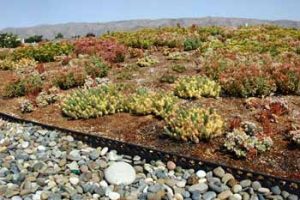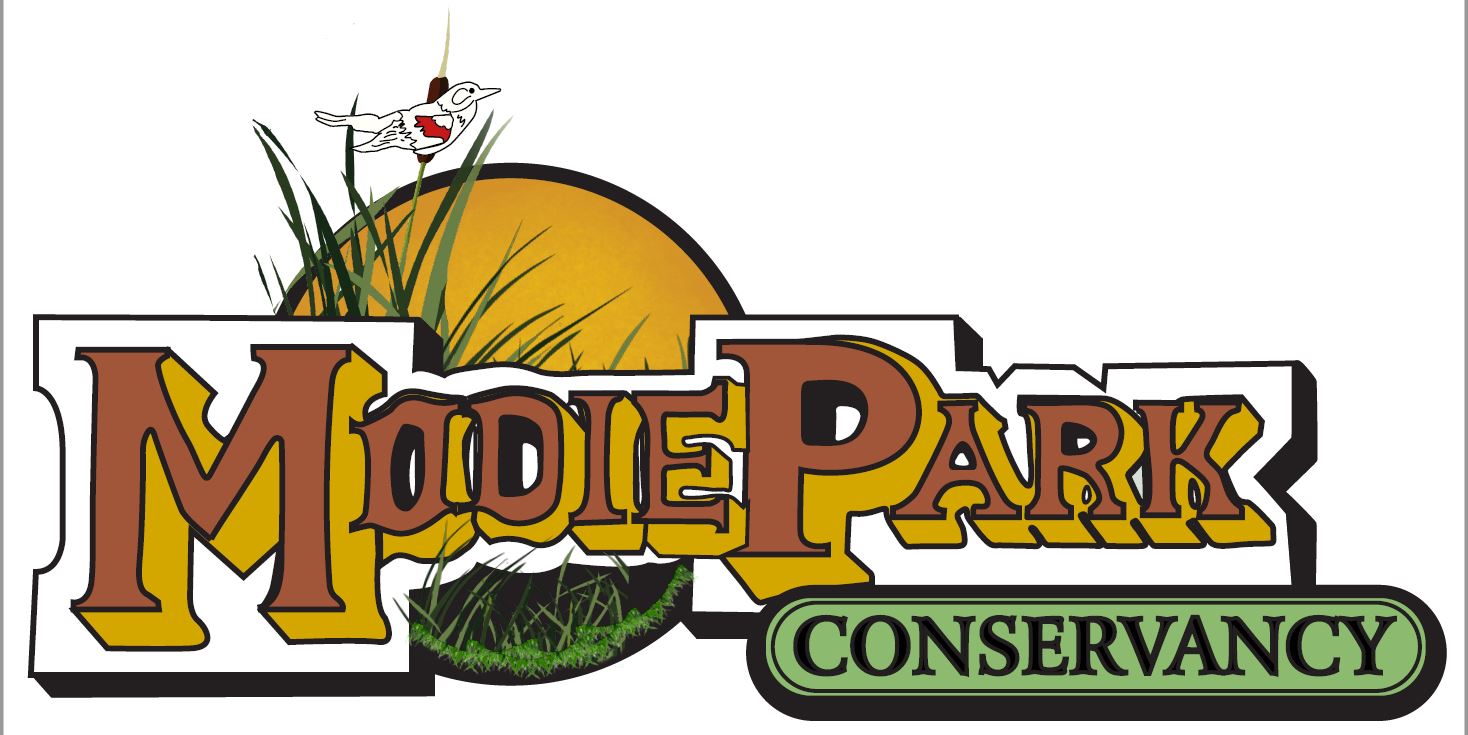 Modie Park’s Green Roof
Modie Park’s Green Roof
Visitors to Ruth Rowell Modie Park often ask about the plants growing on the roof of the restroom.
Frequently Asked Questions:
Why build a restroom with a green roof in Modie Park?
A. The Modie Park concept plan describes an outdoor classroom where “ecological harmony between humans and the natural elements will be the principle that guides management decisions.” The green roof, and the interpretative panel that describes it, provide an opportunity for dialog with visitors about ecosystems, natural resource interrelationships, and sustainable development.
What are the advantages to a green roof?
A. Storm water management – During a storm, soil on a green roof absorbs precipitation until it reaches its saturation point which reduces or eliminates runoff during a short event. During a more sustained storm, runoff is released slowly reducing or delaying the impact runoff and perhaps delaying it until rainfall has stopped.
Reduced energy costs – Several inches of soil on the roof provide additional insulation reducing the need for air conditioning and heating.
Reduced heat island effect – Normal roofing material absorbs heat from the sun during the day and radiates it back at night heating up the area around the building creating a “heat island”. Soil and plants absorb less heat.
Longer roof life – Soil and plants protect roofing material from damaging UV radiation extending the life of the roof.
 Isn’t a green roof more expensive?
Isn’t a green roof more expensive?
A. Installation of a green roof is more expensive than a traditional roof but, energy savings and longer life amortize the expense. Although oxygen produced and carbon sequestered by a green roof doesn’t put money back into the pockets of property owners, it does benefit the environment.
Are the plants on the roof in Modie Park irrigated?
A. The sedums planted were selected for their drought resistance. A computer controlled drip irrigation system is installed on the roof and was used to help establish the plants in 2007. Plant health and the monthly rainfall are be carefully evaluated to set future irrigation levels.
What are the names of the plants growing on the roof?
- Tricolor Stonecrop Sedum – Sedum spurium ‘Tricolor’
- Dragon’s Blood Sedum – Sedum spurium ‘Dragon’s Blood’
- Variegatum – Sedum kamtschaticum ‘Variegatum’
- Variegated Creeping Stonecrop – Sedum rupestre
- Sedum Blaze of India – Sedum spurium “Fuldaglut’
- Carnea Sedum – Sedum spathulifolium ‘Carnea’
- Hen and Chicks – Sempervivum tectorum ‘Red Beauty’
Why were sedums selected for planting on the roof?
A. Plants in the sedum family are drought resistant and produce a minimum of organic material.
When was the roof planted?
A. The roof was planted April 18, 2007, by Lewiston Parks and Recreation employees Kim Jones and Brian Jarolimek.
Is that real dirt on the roof?
A. The plants are rooted in a growing medium manufactured to be lighter and absorb more water than natural soil.
Does the green roof have to be weeded?
A. Yes, weed seeds are deposited on the roof by wind and birds. Because the artificial soil is not compact, weeds can be pulled by hand easily a couple of times a year.
Restroom, parking, irrigation, and plantings in Ruth Rowell Modie Wildlife Park are made possible by a Land and Water Conservation Grant with assistance from Idaho Foundation for Parks and Lands.

